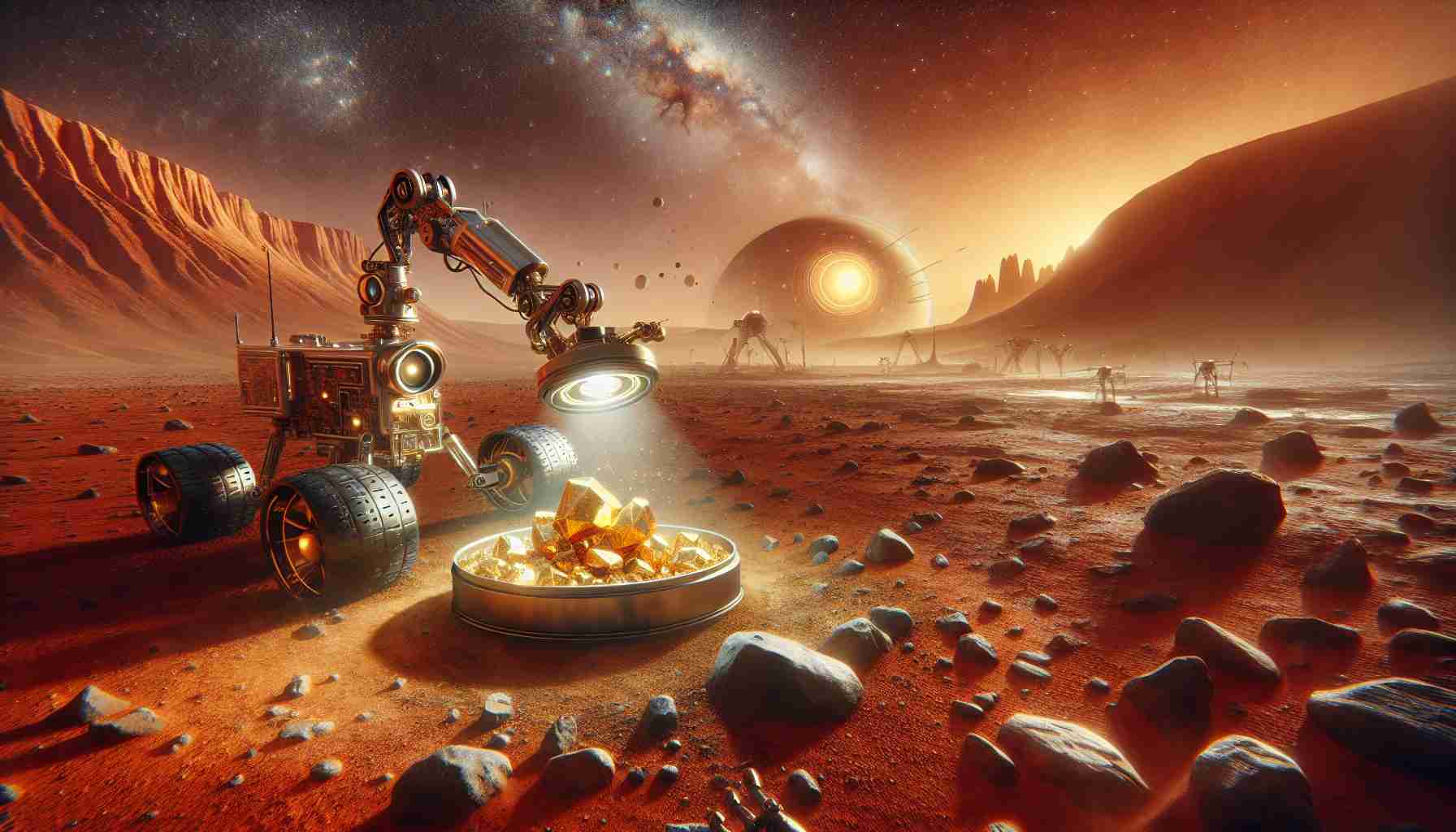
Intriguing Martian Revelations
During a recent exploration of the Gediz Vallis channel on Mount Sharp, Mars, a remarkable discovery unfolded as a peculiar rock was inadvertently split open. What was revealed to NASA’s Curiosity Mars rover were stunning golden crystals, an unprecedented find in an area predominantly associated with sulfate salts. This unexpected revelation in an ancient setting that once saw the flow of water and potential microbial life has ignited a flurry of inquiries into the enigmatic geological past of Mars.
Astonishing Unveil
Instead of the anticipated sulfate minerals, the rover encountered elemental sulfur, in its pure form, nestled within the rocky terrain. The sheer presence of this pristine sulfur, known for its odorless nature distinct from hydrogen sulfide gas, has left scientists bewildered. The implications of this discovery challenge existing perceptions of Mars’ historical conditions, as the geological origins of this elemental sulfur remain shrouded in mystery.
Enigmatic Landscape Insights
The Gediz Vallis channel, with its remarkable topography sculpted by ancient liquid flows and debris, has long captured the fascination of researchers. Recent observations by Curiosity suggest a complex interplay of catastrophic floods and local landslides in shaping the distinctive landscape features observed today. These findings provide valuable insights into the dynamic geological evolution of Mars, offering a glimpse into its tumultuous past.
Future Explorations Await
As scientists continue to peel back the layers of Mars’ intricate history, each revelation opens up new avenues of inquiry, underscoring the inexhaustible mysteries that await unraveling on the Red Planet. The unearthing of these golden sulfur crystals stands as a testament to the boundless potential for discovery that planetary exploration embodies, sparking renewed excitement for the ongoing quest to decode the secrets of Mars.
Unearthing Martian Gold: Beyond the Surface Revelations
While the discovery of golden sulfur crystals on Mars has captured the attention of the scientific community, there are additional intriguing facets to this enigmatic finding that merit further exploration. As researchers delve deeper into the implications of this unexpected revelation, several pressing questions emerge, shedding light on the complexities of Mars’ geological history.
Key Questions and Challenges:
1. What geological processes led to the formation of these unique golden sulfur crystals on Mars?
2. How do the presence of elemental sulfur crystals alter our understanding of Mars’ past environmental conditions and potential habitability?
3. Are there other undiscovered elements or minerals waiting to be unearthed beneath the Martian surface?
4. What technological advancements are needed to facilitate more in-depth exploration and analysis of Martian geology?
Answers and Controversies:
1. The formation of golden sulfur crystals on Mars likely involves a combination of volcanic activity, hydrothermal processes, and possibly interactions with subsurface water sources.
2. The discovery of elemental sulfur challenges the prevailing theories of Mars’ ancient atmosphere and the role of sulfur in shaping its geological landscape.
3. While the presence of sulfur crystals is a groundbreaking find, there may be other elusive minerals or elements on Mars that have yet to be discovered, hinting at a wealth of untapped scientific potential.
4. Advancements in robotics, spectroscopy, and remote sensing technologies are crucial for overcoming the challenges of exploring Mars’ rugged terrain and analyzing complex geological formations in greater detail.
Advantages and Disadvantages:
Advantages:
– The discovery of golden sulfur crystals provides a rare glimpse into the intricate geological processes that have shaped Mars over millions of years.
– Unraveling the mysteries of Martian gold offers valuable insights into the planet’s past habitability and the potential for ancient life forms to have existed.
Disadvantages:
– The complexities of Mars’ geology and the harsh environmental conditions present significant challenges for conducting detailed investigations and sample analyses.
– Limited access to certain regions of Mars and the constraints of robotic exploration impede the thorough examination of geological features and materials.
Suggested Related Links:
– Mars Exploration
– Martian Geology






